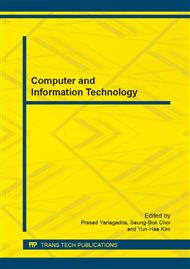p.1105
p.1109
p.1114
p.1121
p.1129
p.1133
p.1139
p.1144
p.1149
Handheld Lighting Circuit Detector Based on Alternating Electric Field
Abstract:
To find the point of failure of dark line will tend to make electricians helpless, so the design of handheld lighting circuits detector is necessary. This article discribes the main idea of probes inducing the alternating electric field around electricity cables[1]. The collected signal in system is processed through the amplification, filtering, comparison circuit and STC12C5A08AD. Finally, real-time display grid numbers and testing time on 12864. The system’s functions include position detection, discrimination, position records and others. The system can well distinguish different cable. After testing and certification, system is reliable, stable and with practical value.
Info:
Periodical:
Pages:
1129-1132
Citation:
Online since:
February 2014
Authors:
Price:
Сopyright:
© 2014 Trans Tech Publications Ltd. All Rights Reserved
Share:
Citation:


